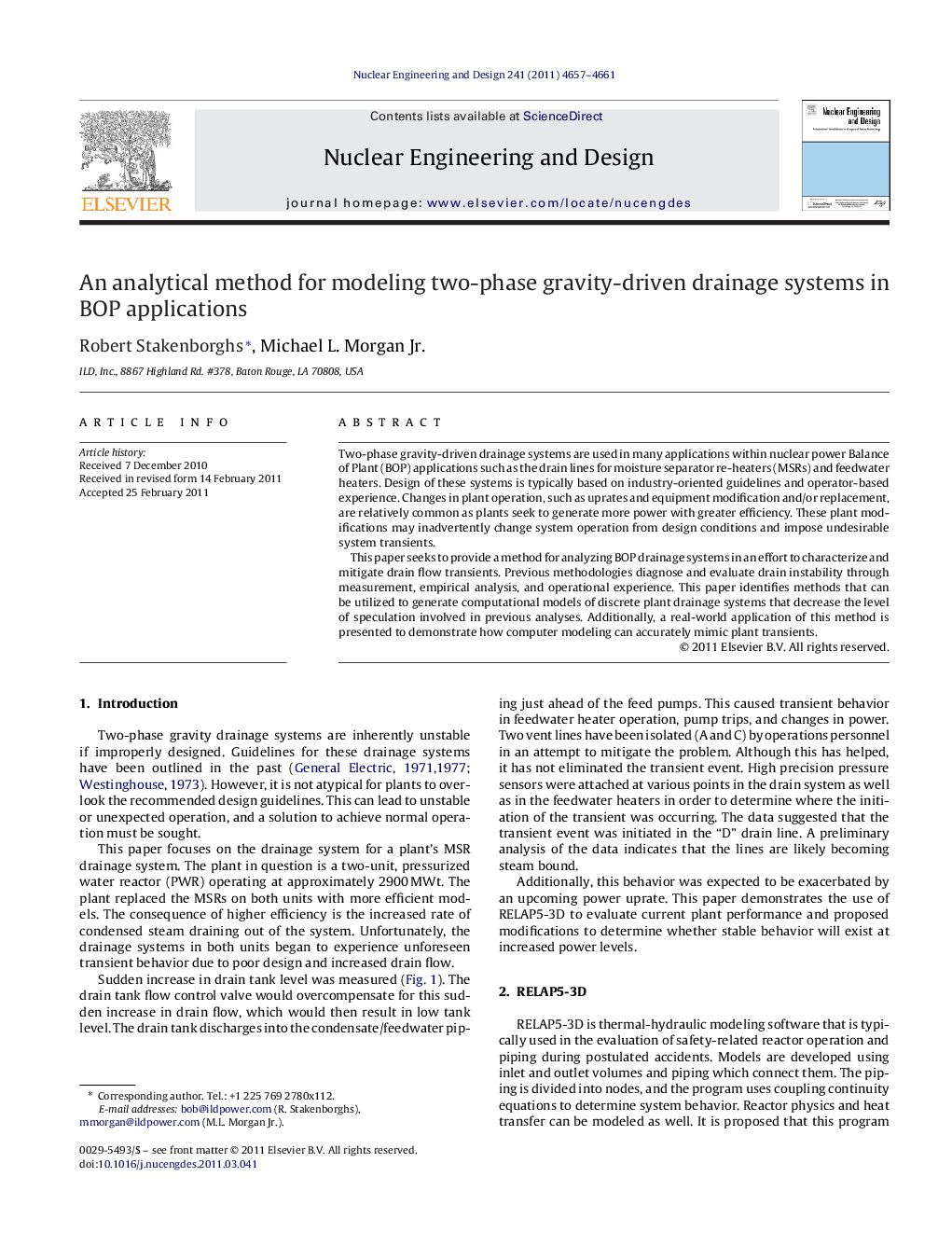| Article ID | Journal | Published Year | Pages | File Type |
|---|---|---|---|---|
| 297572 | Nuclear Engineering and Design | 2011 | 5 Pages |
Two-phase gravity-driven drainage systems are used in many applications within nuclear power Balance of Plant (BOP) applications such as the drain lines for moisture separator re-heaters (MSRs) and feedwater heaters. Design of these systems is typically based on industry-oriented guidelines and operator-based experience. Changes in plant operation, such as uprates and equipment modification and/or replacement, are relatively common as plants seek to generate more power with greater efficiency. These plant modifications may inadvertently change system operation from design conditions and impose undesirable system transients.This paper seeks to provide a method for analyzing BOP drainage systems in an effort to characterize and mitigate drain flow transients. Previous methodologies diagnose and evaluate drain instability through measurement, empirical analysis, and operational experience. This paper identifies methods that can be utilized to generate computational models of discrete plant drainage systems that decrease the level of speculation involved in previous analyses. Additionally, a real-world application of this method is presented to demonstrate how computer modeling can accurately mimic plant transients.
► An actual gravity drainage system in an operating power plant is described. ► A drain flow oscillation exists in the system, which is replicated using RELAP5. ► The RELAP model identifies that steam binding due to poor venting is the cause. ► The RELAP model shows that new vent piping prevents the flow oscillations. ► The revised vent piping is installed in the plant and resolves the flow oscillations.
